Representatives of each of the partner nations in the Energy Pathfinder Project travelled to the Faroe Islands on the 23rd of August for a partner meeting and associated study visits. We were hosted by Bárður í Baianstovu who is an architect at Landsverk (the islands’ office of public works). Bárður is the Pathfinder project’s representative in the Faroe Islands.
1. Vicarage of Viðareiði
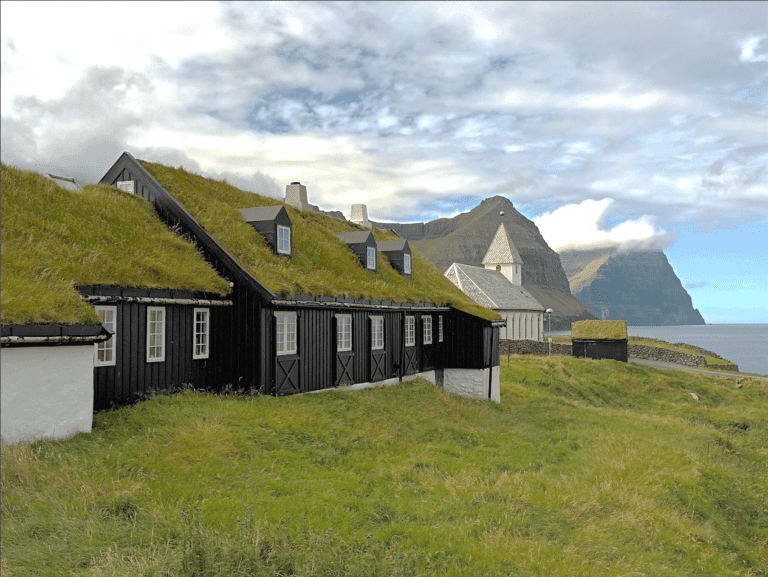
© Simon Montgomery, Historic Environment Scotland
The delegates’ first visit was to the vicarage at Viðareiði which is the Faroe Islands’ demonstrator building in the Pathfinder Project. The vicarage is the most northern of the 20 vicarages of the Faroe Islands and built on a site that has been occupied for more than 500 years. It was built in 1854 and is a good example of a traditional Faroese building, built at a time when building materials, except turf and stone, were extremely expensive and hard to get hold of. It is in a location that is particularly prone to strong winds and storm conditions. In 2007, the church was developed as a Faroese business area and (as a result) new approaches to restoring and adapting the Vicarage were applied by the Diocesan authorities. The Pathfinder delegates viewed the whole-building approach to energy retrofit carried out in 2018. These included insulation and glazing upgrades alongside refurbishment and upgrading of the historic fabric. The building is heated by a ground source heat pump located in the basement and supplied by heat from a 240m borehole. The pump heats a wet distribution system of radiators in the house.
The group was welcomed by the current vicar who said that the house was a pleasure to live in after many years of a high turnover of residents due to being cold and uncomfortable.
Whaling Station at Við Áir
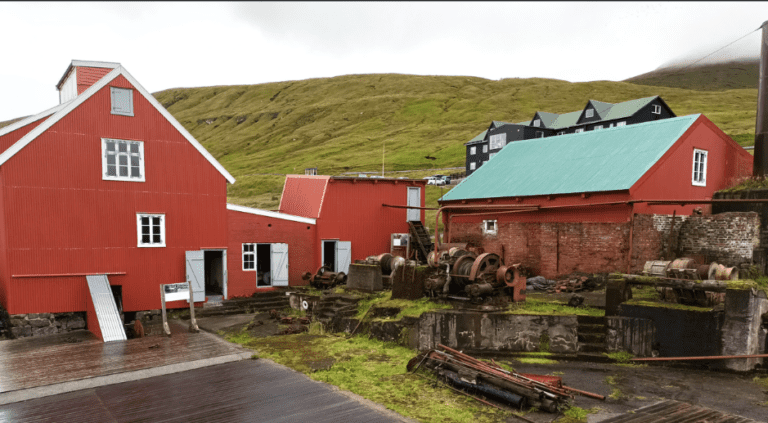
© Simon Montgomery, Historic Environment Scotland
The station’s activities ceased for a temporary period during World War 2 but resumed until whaling activities largely stopped there in 1984 due to declining whale numbers and increasing restrictions on the whaling industry. The National Museum recognised the exceptional significance of the site in the late 1980s and it was first opened to the public in 2011.
The Pathfinder delegates were welcomed by Erland Viberg Joensen, Conservator at the Faroe Islands National Museum, who gave us a tour of the buildings explaining the processes associated with the machinery and industrial artefacts which represent a remarkable survival of industrial and seafaring heritage.
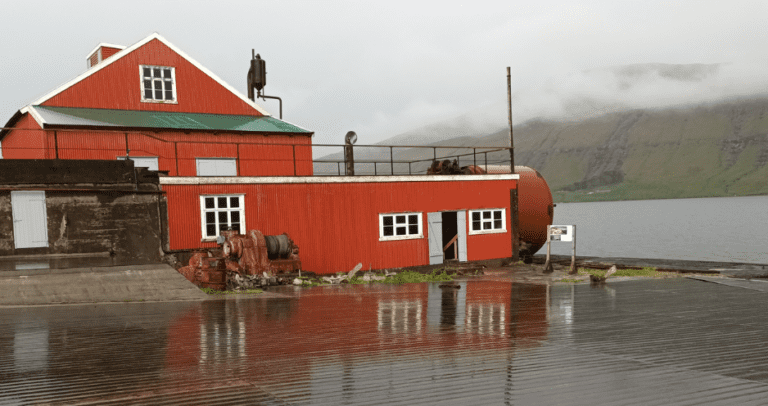
© Simon Montgomery, Historic Environment Scotland
Sornfelli Cold War Radar Station.
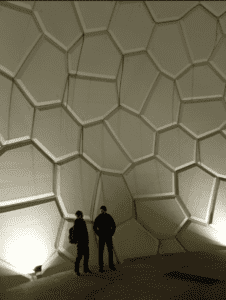
© Simon Montgomery, Historic Environment Scotland
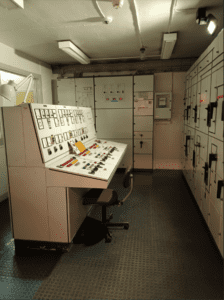
© Simon Montgomery, Historic Environment Scotland
We next met Sámal Ímundarson Hansen (Landsverk) at the former Cold War radar station at Sornfelli. The site is one of a series of post-war listening stations constructed across the north Atlantic and down into southern Europe for the purpose of tracking Soviet shipping and aircraft. The Faroe Islands station had a key strategic position for the tracking of traffic from northern Russia. It consists of a series of rooms located within a mountain at a height of 700m. The accommodation, offices and generator station are in the form of a nuclear bunker with internal access to two radar domes 50m above. The delegates saw a site which raised interesting questions about preservation although the domes have more recently found a use for tracking domestic air traffic over this part of the north Atlantic. Through its membership in NATO, Denmark has a desire for a new military radar in the one Dome. There is therefore an agreement with the Faroese National Government that a radar will be set up within the next 5 to 6 years, as part of GIUK.

© Bárður í Baianstovu, Landsverk
Partner Meeting, Landsverk office, Tórshavn: 25 August 2022
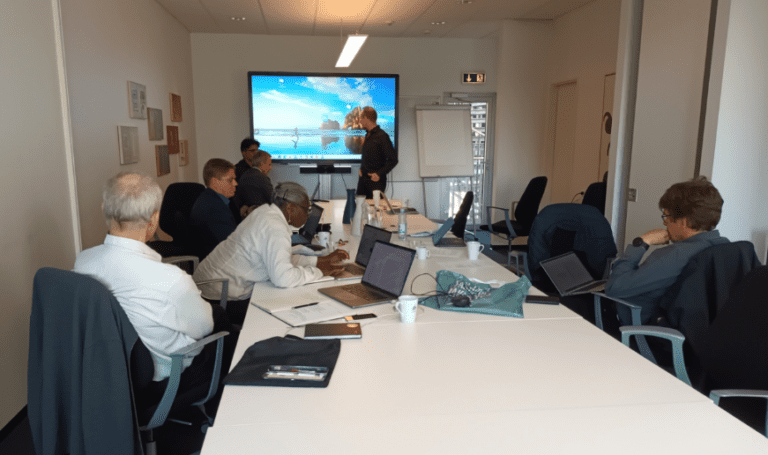
© Simon Montgomery, Historic Environment Scotland
The partner meeting was held at Landsverk’s office in central Tórshavn. It was attended by eight delegates from the five partner countries. As it was the penultimate meeting before the project deadline, the discussion focussed on progress reports with the workstreams that still required to be submitted to the project’s communal files in preparation for publication.
Visit to Kirkjubøur: 26 August 2022
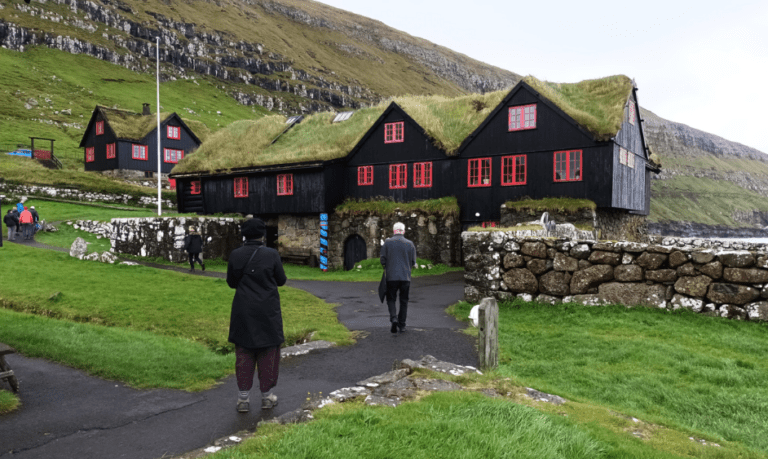
© Simon Montgomery, Historic Environment Scotland
Kirkjubøur is the southernmost settlement on Faroe’s principal island and is the location of an ancient religious settlement. The delegates had the great privilege of being shown around the site by its owner, Jóannes Patursson. Although it contains an ancient cathedral, an ancient church and an ancient log house, it is essentially a working farm and its owner gave us an interesting account of the challenges of managing the site including accommodating increasing tourist numbers. St Magnus Cathedral is a ruin which is believed to date from around 1300, and the nearby St Olav’s Church is thought to have origins in the 11th century. The site has been subject to two natural disasters and the farmhouse was built on the ancient ruins of the site.
Tinganes and historic Tórshavn
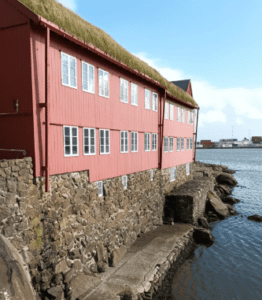
© Simon Montgomery, Historic Environment Scotland
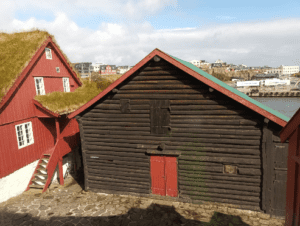
© Simon Montgomery, Historic Environment Scotland
Kirkjubøur is the southernmost settlement on Faroe’s principal island and is the location of an ancient religious settlement. The delegates had the great privilege of being shown around the site by its owner, Jóannes Patursson. Although it contains an ancient cathedral, an ancient church and an ancient log house, it is essentially a working farm and its owner gave us an interesting account of the challenges of managing the site including accommodating increasing tourist numbers. St Magnus Cathedral is a ruin which is believed to date from around 1300, and the nearby St Olav’s Church is thought to have origins in the 11th century. The site has been subject to two natural disasters and the farmhouse was built on the ancient ruins of the site.

© Simon Montgomery, Historic Environment Scotland
Old Hospital, Tórshavn
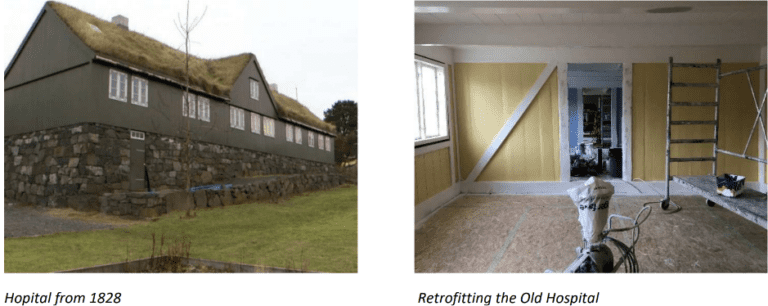
© Bárður í Baianstovu, Landsverk
Our final study visit was to the Old Hospital on the west side of the Vestaravág harbour. Originally sited closer to the water, the hospital was moved to its current location to allow for commercial harbour expansion. The delegates were shown the restoration and retrofit works being carried out at the building.
The hospital is one of 16 similar hospitals built in the Danish kingdom in the 1820s. This hospital is the only one preserved.

© Simon Montgomery, Historic Environment Scotland

© Simon Montgomery, Historic Environment Scotland










